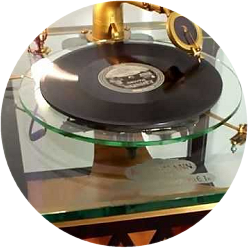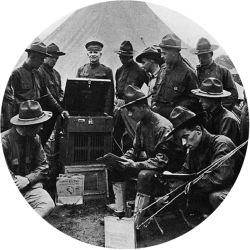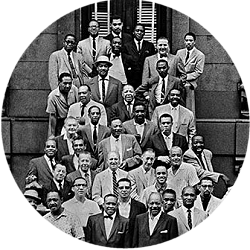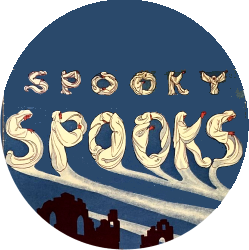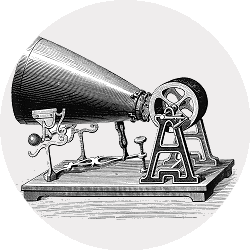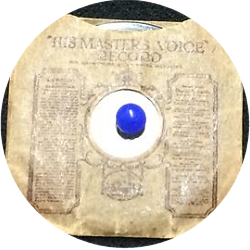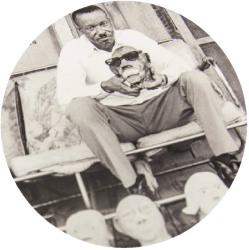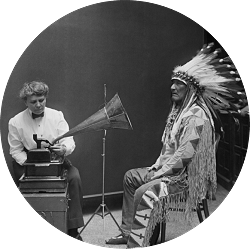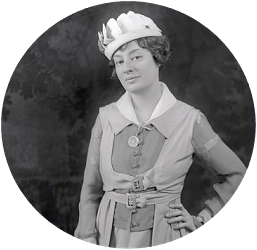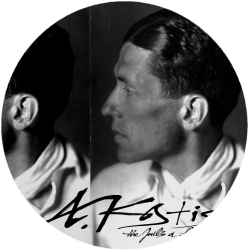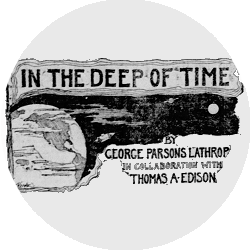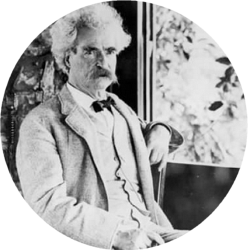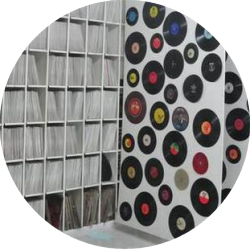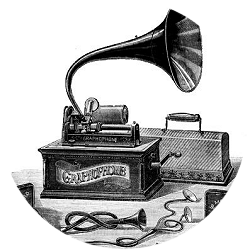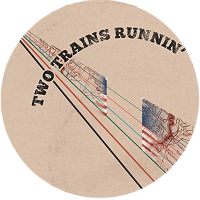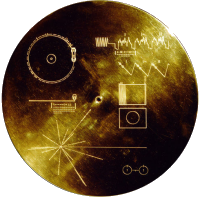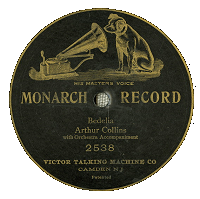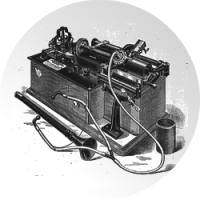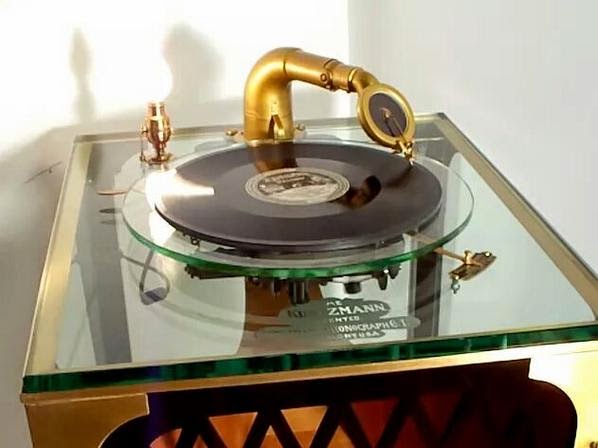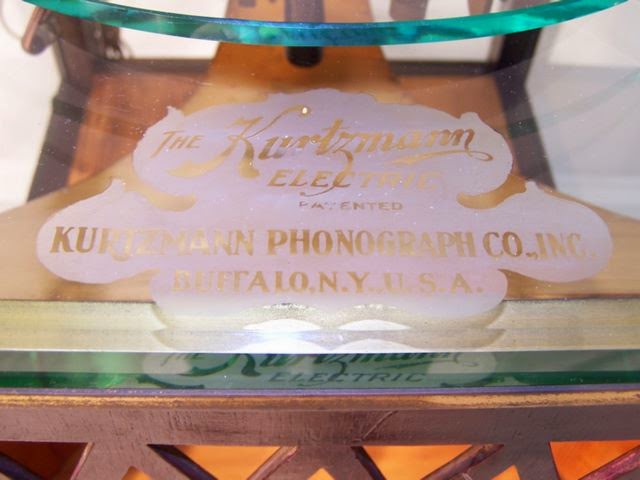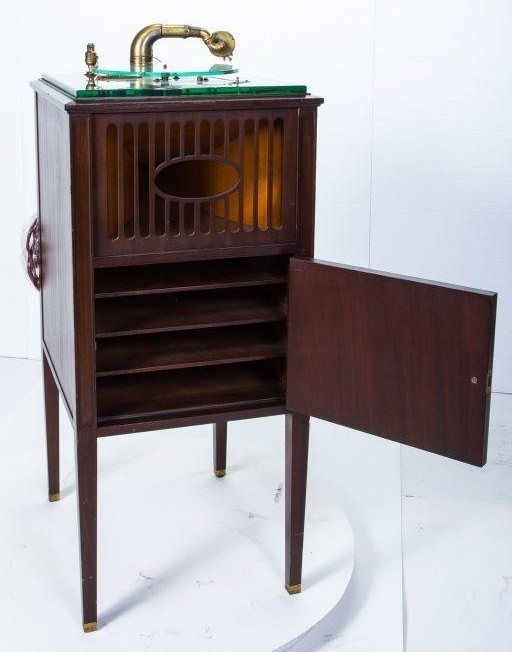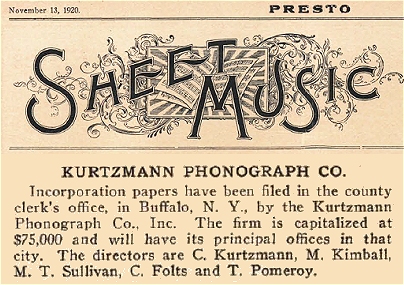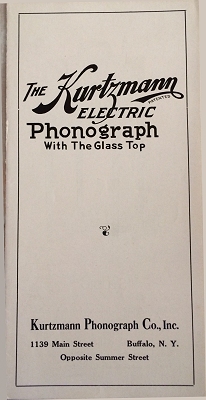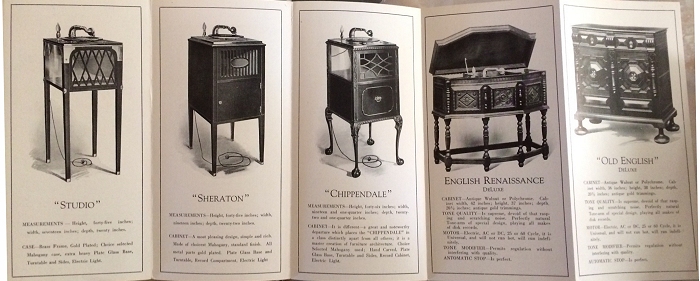in 1921, the Kurtzmann Glass Phonograph was the hipster audio freak's must-have music machine of it's day. It played vertical cut discs of the Edison/Pathe variety, but could be modified to play lateral cut records with the use of an attachment to the tone arm.
And they're still classy-looking eye candy today! This is the "Studio" Model
Being able to see inside the machine meant you needed to have a beautiful horn as well. The teak horn inside was perfect for acoustically recorded records, Not brassy or tinnier than it had to be with conventional horns of similar sized machines. Or boxy like Victrolas. They're extremely rare today.
Yes, beautiful, but how does it sound?
For those who aren;t familiar with old phonographs - only the movement of the motor is electric. The rest of the machine, including the sound reproduction is all "old timey" acoustic. With a Pot metal tone arm. a baseball sized motor made in Rochester, NY, belt-driven, fragile as a wine glass, and heavy as a rusty car, the sound is about what you'd expect - ”meh”. However, for those who love phonographs for their aesthetics and their ingenuity as well as for their sound, this is still a winner for more reasons than just the novelty. See the video below to see how it sounds.
The Kurtzmann Phonograph Company
The Kurtzmann Piano Company, a manufacturer of pianos, was established in Buffalo, NY in 1848. By 1921 it had opened a large music store on Main Street in Buffalo, selling not only its own pianos but also Victrolas and all sorts of music trade items.
In October 1918 Louis Kurtzmann filed a patent for this unusual machine, for which the motorboard and the turntable were made of glass. Although glass horns probably of European origin had appeared in late 1890s, this machine, sold by the Kurtzmann Phonograph Company, is probably the first example of glass cabinetry in a consumer phonograph. The Kurtzmann was driven by "suspended" electric motor, and the electric current also provided power for a small lamp on top of the machine.
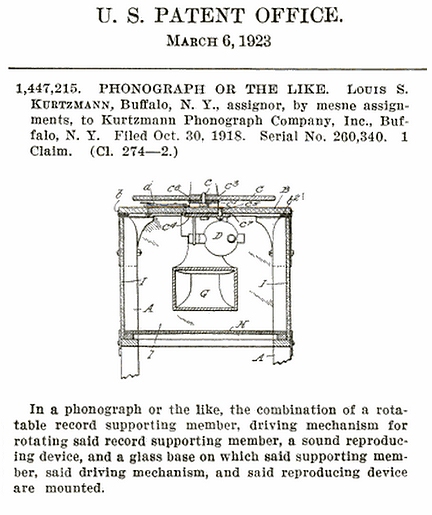
Kurtzmann Glass Phonograph Video
{youtube}Q96gqa2Ds9w{/youtube}
The Kurtzmann Phonograph Brochure
On a sidenote...
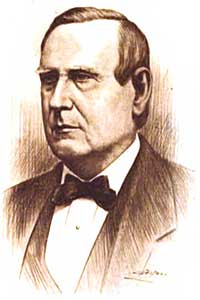 Christian Kurtzmann was born in Mecklenburg, Germany in 1815. He emigrated to America, settling in Buffalo, NY. In 1848, he began making pianos in a workshop on Staats Street. Around 1859, he had a partner in "Kurtzmann & Hinze.", but dissolved that partnership by the late 1860s and built pianos under his own name. His reputation for excellent pianos grew and demand exceeded the supply because Kurtzmann would not increase manufacturing capability beyond that which he could personally supervise. That meant turning out one piano a week in the early years.
Christian Kurtzmann was born in Mecklenburg, Germany in 1815. He emigrated to America, settling in Buffalo, NY. In 1848, he began making pianos in a workshop on Staats Street. Around 1859, he had a partner in "Kurtzmann & Hinze.", but dissolved that partnership by the late 1860s and built pianos under his own name. His reputation for excellent pianos grew and demand exceeded the supply because Kurtzmann would not increase manufacturing capability beyond that which he could personally supervise. That meant turning out one piano a week in the early years.
Christian Kurtzmann died in 1886, but had brought his sons, Louis S. and Frederick, into the company at an early age. Frederick opened a music and piano store in Buffalo in 1888. Louis formed a partnership with Alexander Cordes and Adolph Geiger and became head of the company.
Tensions in 1914
Son Frederick changed his name to Charles (C. Kurtzmann) after his father's death for reasons we may speculate on. He was sued by the C. Kurtzmann Company for purposefully changing it to capitalize on the company's name. It is THIS C. Kurtzmann that started the Kurtzmann Phonograph Company. Charles died in 1926, and so did the phonograph company.
Y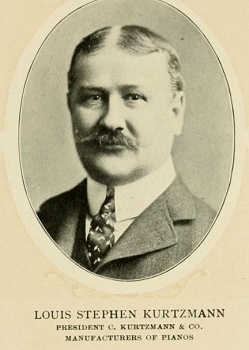 ou can read the court case here.
ou can read the court case here.
On side-sidenote...
The C. Kurtzmann Company sued the other son Louis & his son (also named Christian) for, among other reasons, trying to sell stock behind the company's back. Louis defended himself by saying he was trying to sell stock of the Kurtzmann Phonograph Company. Note the above patent belonged to Louis, who then assigned it to the phonograph co. They were a litigious bunch after Dad died!
You can read that court case here.
But I digress...





